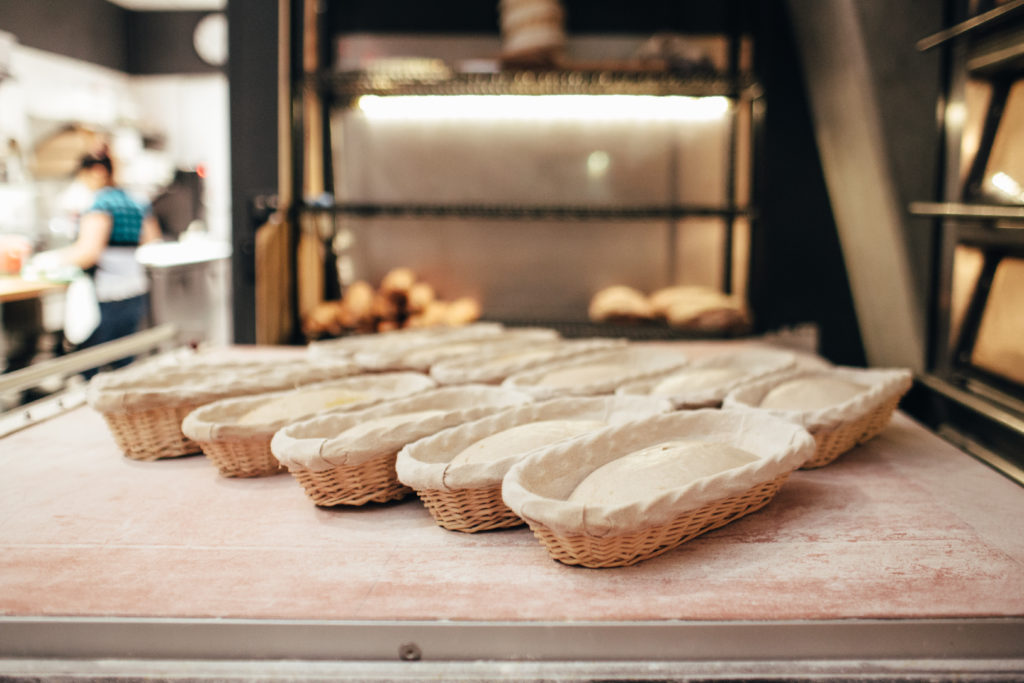It is almost time to have a discussion regarding the transformation from starter to bread– a mixture of art, repetition, intuition, and scientific process.
Before this can happen, however, we must look back to the starter.

As we’ve mentioned before, all roads lead back to the starter. Have a loaf you’re unhappy with? The root of this problem most likely lies in the fact that you are cultivating wild yeast and bacteria- unruly specimens!
The baker is able to influence and control these microbes via three variable elements in the process:
1. flour type/combination
2. starter hydration/water temperature
3. seed size/feeding schedule.
(A quick disclaimer: we seek to provide guidelines and context to help you in your bread journey- not hard rules. Making bread is a very personal process, and there are many approaches. )
Flour Type and Combination
Certain flours simply encourage more microbe activity than others. Whole wheat flour, which contains all the pieces of a wheat grain (bran, germ, and endosperm), will serve as a greater food source than, say, white bread or all purpose flour, which contain only the endosperm (mostly just starch).
Rye flour, rich in vitamins, minerals, and nutrients, is particularly effective in encouraging microbe activity.
Many bakers favor a mixture of flour to maintain their starters. I personally find that a 50/50 combination of regular bread or all purpose flour and whole wheat flour yields great results. However, if you can’t get your hands on whole wheat or rye flour right now, its perfectly okay. Remember, the starter will persevere!
Starter Hydration and Water Temperature
The manipulation of water is crucial in bread baking. After all, water ends up comprising a large portion of both your starter and your loaf.
Hydration refers to the amount of water used in proportion to flour. 100% hydration indicates the use of equal parts flour and water, whereas 70% hydration indicates the water volume is 70% that of the flour.
Water encourages activity– a wetter a dough or starter will most likely be more active. Thus, in theory, a starter can be maintained purposefully at higher hydrations to encourage the life cycle, or conversely at lower hydrations in order to slow the process. Our typical hydration is 100% when feeding our starter.
Water temperature is also crucial. Feeding your starter with warm water, (78-80 degrees) encourages a much faster feeding and reproductive cycle than cool water (70-73 degrees), and faster is not always better. Especially now that we are entering summer, bakers will be mixing their starters with cooler water. This point becomes more crucial when transitioning from starter to bread, a topic we will visit later.
Seed Size and Feeding Schedule
As we noted in the previous post, “seed” refers to the portion of starter added to your fresh mixture of flour and water. The amount of seed you carry over into your starter has a huge impact on the life cycle. The more seed, the more microbes. Want your already established starter to be ready to bake with in 4-5 hours? Try feeding with equal parts seed, flour, water, indicated numerically as 1:1:1. Intend on a more balanced approach? I often feed my starter at 1:4:4. This indicates my seed is 25% of the total flour weight or water weight, or 12.5% of the total mixture weight.
If you can recall the last post, we discussed how acid builds up in your starter as a natural byproduct of the life cycle. Because of this, we must always be conscious of how much seed we are bringing over into our starter or into our bread. While that seed contains microbes, it also contains spent flour (flour consumed by yeast and bacteria) and acid. Carrying these things over is inevitable, and every once and a while using a high seed percentage it totally okay. In general however, in keeping a healthy starter, bakers try to limit their seed size.
The final point of this blog post deals with an extremely simple notion. Feeding your starter more regularly will encourage a faster and more active life cycle. The starter at the joint bakery is fed twice daily, and that is the routine I follow at home as well. However, because it cannot be overstated, the starter is resilient. It does not need to be fed even daily to create a tasty loaf of bread, though that is our recommendation for a baker seeking an open crumb!
Stay tuned for our next post, as we continue our journey toward the final loaf.
-Eli
yxbpvqcOkt
StimWDbHovT
eWwrBfhm
YOLyFtTamDrWNjHE
qAWZgPDctnipr
Your article helped me a lot, is there any more related content? Thanks!
gWtlETwJxOichaR
VTHLmwZS
Your point of view caught my eye and was very interesting. Thanks. I have a question for you.
BNyORshtaMzXj
dJuImaRnqYDXPN
HdXMSfFrbwmg
WPdxLKIjOVUv
You have noted very interesting points! ps decent website.Expand blog